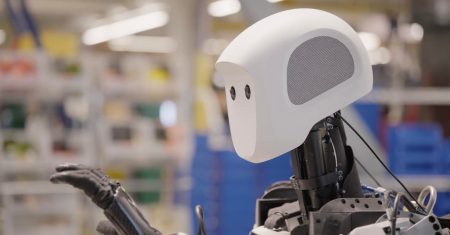Ashish Kachru is CEO of DataLink Software.
Just as smart industries are putting aside their paper-laden processes and embracing exciting technologies, healthcare is ditching many cumbersome manual practices—albeit at a much slower pace. As a healthcare tech CEO, I cannot wait to see our industry catch up to our peers in using artificial intelligence (AI), large language models (LLM), machine learning (ML), natural language processing (NLP) and robotic process automation (RPA) to streamline administration, compliance and delivery of care.
We’re able to travel the world and easily access funds from ATMs in the local currency—rupees, pesos, dollars. It’s a universal system that has worked well for decades and is a worldwide expectation. Yet the genius of the international financial sector in adopting uniform standards did not seem to inspire U.S. healthcare to unify its systems and tools. Government regulation has instead been required to push the industry forward.
One area ripe for change is the labor-intensive practice of “chart-chasing.” This manual review of paper charts, folder by folder, is a burden to both healthcare plans and providers. Worse, it is often conducted under the pressure of regulatory or third-party deadlines.
The Burden Of Manual Audits
Chart-chasing resembles the traditional on-site visits by accountants to client firms for annual financial audits. Most financial audits today have been converted to electronic methods, but there are pockets of the economy in which on-site teams still thumb through paper files to identify discrepancies and errors.
For example, industries like construction and manufacturing with large physical inventories and tangible assets may still rely on paper audits. You can bet that auditors in these sectors do everything they can to digitize the data that’s captured from paper documents. Few firms stick to tedious, expensive manual audits unless they have a compelling reason to do so.
One form of chart-chasing in healthcare takes place as health insurance teams visit provider organizations to audit medical records for coding errors and omissions like missed health screenings. Audits are driven by regulatory and financial imperatives. These often happen at year-end and can be quite burdensome.
Healthcare data is especially challenging to review because the industry uses a clinical lexicon of 75,000 codes developed by the World Health Organization (International Classification of Diseases, or ICD-10) to categorize every medical condition and procedure, organized in subset upon subset. Yet the 75,000 codes cannot capture every aspect of the human condition, and no one expects providers to master them.
Next Best Step In Care
Providers capture both structured and unstructured data during patient encounters. They may electronically input ICD-10 codes (structured), but this omits the wealth of unstructured data buried in CAT scans, graphics, free text notes, spoken evaluation notes and faxed documents. This critical data is difficult to capture in a standardized, systematic format that paints a more complete picture of a patient’s health.
For example, a clinician may enter a diagnostic code for depression into an electronic health record (EHR), but without a larger context, the data has less value. Whether depression presents in conjunction with diabetes or in response to a patient’s life circumstances is important in discovering the “next best step” in the patient’s care.
Fast, Rich, Accurate Data
Natural language processing (NLP) can leverage ML algorithms to extract meaning from the spoken and written words generated during an office visit. Language, after all, is built on rules, and software can be “trained” to decode and convert progress notes and other unstructured inputs into intelligible information. Robotic process automation can increase the speed of the ML/NLP data-capturing workflows, generating faster, richer, more accurate data. Clinical excellence and technology thus create the truest and most complete picture of the patient’s health.
A distinct advantage of this approach that regulators are also pushing is the proactive use of clinical data instead of the retrospective review of the chart-chasing environment. The waste of the retrospective review can be defeated by technology.
Interoperability Comes Of Age
Regulators have driven the industry hard to adopt interoperability (unlocking stubborn data silos) most recently via mandates in the 21st Century Cures Act of 2016. The industry has responded by developing uniform standards for electronic data exchange called Fast Healthcare Interoperability Resources (FHIR), which organizes discrete units of data and how they can be shared and acted upon. It is gaining significant adoption. Perhaps ironically, standardization is opening the door to innovation.
Segments of the industry have resisted interoperability because they are protective of their business models and have fears about meeting hefty regulatory protections for patient privacy. It will take an industry culture shift to adopt a data-sharing mindset. Data silos harm the greater good, but change is inevitable.
Government regulation is certainly a strong motivator for changing healthcare practices and procedures, but new attitudes are also required. The industry needs a change of mindset; to make this happen, innovators need to educate stakeholders about the benefits to the ultimate end user—the patient.
My philosophy is to appeal to altruistic motives because I truly believe industry players want to create healthier populations while they prosper. Technologists can support new attitudes by offering sleek, sophisticated solutions that are intuitive to use. When stakeholders are confident in the technologies and sharing data becomes the path of least resistance in operations, hearts and minds will follow.
Leading technology players are already deploying sophisticated tech capabilities to drive proactive, data-rich methods to the “next best step” in the patient treatment trajectory. Just as fewer people today write checks in their daily lives, payers and providers are edging closer to the day they can enjoy a truly standardized free flow of data in many new ways.
Forbes Technology Council is an invitation-only community for world-class CIOs, CTOs and technology executives. Do I qualify?
Read the full article here










